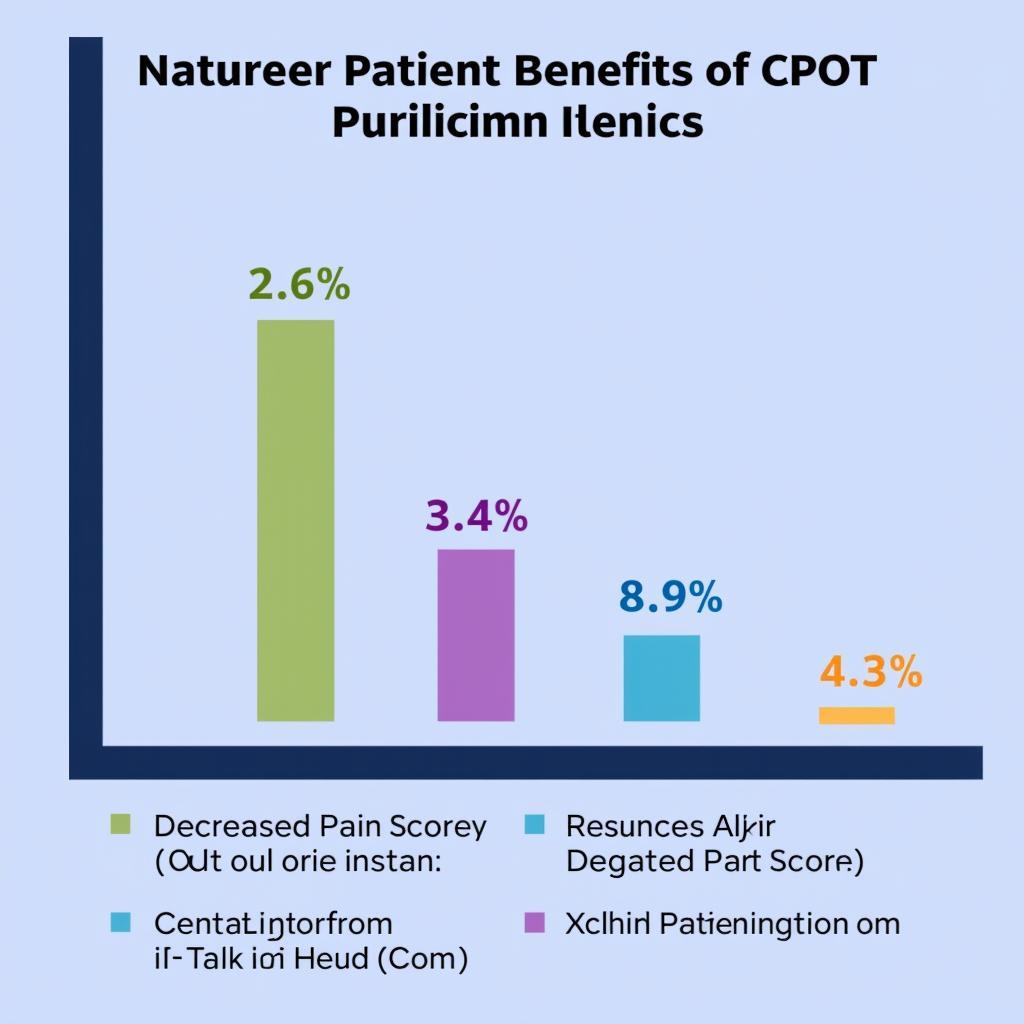The Critical-care Pain Observation Tool (CPOT) is a valuable instrument for assessing pain in critically ill patients who are unable to communicate verbally. This guide provides an in-depth understanding of the CPOT, its application, and its importance in improving patient care.
Understanding the CPOT: Assessing Pain in the Critically Ill
The CPOT is designed specifically for patients in intensive care units (ICUs) who are often sedated, intubated, or otherwise unable to self-report pain levels. This tool relies on observable behavioral indicators to evaluate pain, making it an essential resource for healthcare professionals. It’s crucial to recognize that pain is a subjective experience, and even in the absence of verbal communication, it’s our responsibility to manage it effectively. The CPOT aids us in this vital task. By understanding the tool’s components, we can better identify and address the needs of our critically ill patients.
Recognizing the need for a reliable pain assessment tool in critical care settings, the CPOT was developed to address the unique challenges of this patient population. It’s a user-friendly tool that can be easily integrated into routine assessments, enabling timely interventions and improved patient outcomes. Using the CPOT consistently can contribute to a more humane and patient-centered approach to critical care.
critical care pain observation tool
 CPOT Assessment in ICU
CPOT Assessment in ICU
How to Use the CPOT: A Step-by-Step Guide
The CPOT assessment involves four behavioral categories: facial expression, body movements, muscle tension, and compliance with the ventilator (for intubated patients) or vocalization (for non-intubated patients). Each category is scored on a scale of 0-2, with a higher score indicating more intense pain.
- Facial Expression: Observe the patient’s face for signs of grimacing, frowning, or wincing.
- Body Movements: Look for restlessness, agitation, or guarding.
- Muscle Tension: Assess for rigidity or tightness in the limbs or torso.
- Compliance with Ventilator/Vocalization: For intubated patients, observe for fighting the ventilator or coughing. For non-intubated patients, listen for groans, moans, or cries.
The total CPOT score ranges from 0 to 8, with a score of 2 or higher suggesting the presence of pain requiring intervention. Remember, regular reassessment is essential to monitor pain levels and adjust treatment accordingly.
 CPOT Scoring System
CPOT Scoring System
“Consistent use of the CPOT empowers clinicians to identify and manage pain proactively, leading to improved patient comfort and overall well-being,” says Dr. Amelia Hart, MD, a critical care specialist at the University of Chicago Medical Center.
Benefits of Using the CPOT in Critical Care
Implementing the CPOT offers numerous benefits for both patients and healthcare providers. By enabling the early identification and treatment of pain, the CPOT contributes to improved patient outcomes and a higher quality of care.
- Improved Pain Management: Provides a structured approach to pain assessment, leading to more effective pain relief.
- Enhanced Patient Comfort: Reduces pain and suffering in critically ill patients.
- Reduced Complications: Early pain management can minimize complications such as delirium and prolonged mechanical ventilation.
- Improved Patient Satisfaction: Contributes to a more patient-centered approach to care.
 Benefits of Using the CPOT
Benefits of Using the CPOT
“The CPOT has become an invaluable tool in our ICU. It allows us to address pain effectively, even when our patients can’t tell us they’re hurting,” shares Dr. David Miller, RN, a critical care nurse with over 15 years of experience.
CPOT and Other Pain Assessment Tools
While the CPOT is specifically designed for critically ill adults, other pain assessment tools are available for different patient populations. For instance, the Faces Pain Scale is commonly used for children or individuals with cognitive impairments. Understanding the appropriate tool for each situation ensures accurate pain assessment and effective management.
Conclusion: The Importance of the Critical-Care Pain Observation Tool
The Critical-Care Pain Observation Tool (CPOT) plays a vital role in providing optimal care for critically ill patients. By facilitating early and accurate pain assessment, the CPOT empowers healthcare professionals to manage pain effectively, improve patient outcomes, and promote a more humane and compassionate approach to critical care.
FAQ
- What does CPOT stand for? CPOT stands for Critical-Care Pain Observation Tool.
- Who is the CPOT used for? The CPOT is designed for critically ill patients unable to self-report pain.
- What are the components of the CPOT? The CPOT assesses facial expression, body movements, muscle tension, and compliance with the ventilator/vocalization.
- What is a normal CPOT score? A score of 0 indicates no pain. A score of 2 or higher suggests pain requiring intervention.
- How often should the CPOT be used? The CPOT should be used regularly to monitor pain levels and adjust treatment.
- Can CPOT be used on children? CPOT is designed for adults. Other tools, like the Faces Pain Scale, are suitable for children.
- Where can I find more resources about CPOT? You can find additional information at ai tool for health care.
For further assistance, please contact us via WhatsApp: +1(641)206-8880, Email: [email protected], or visit our office at 910 Cedar Lane, Chicago, IL 60605, USA. Our customer service team is available 24/7.

Leave a Reply